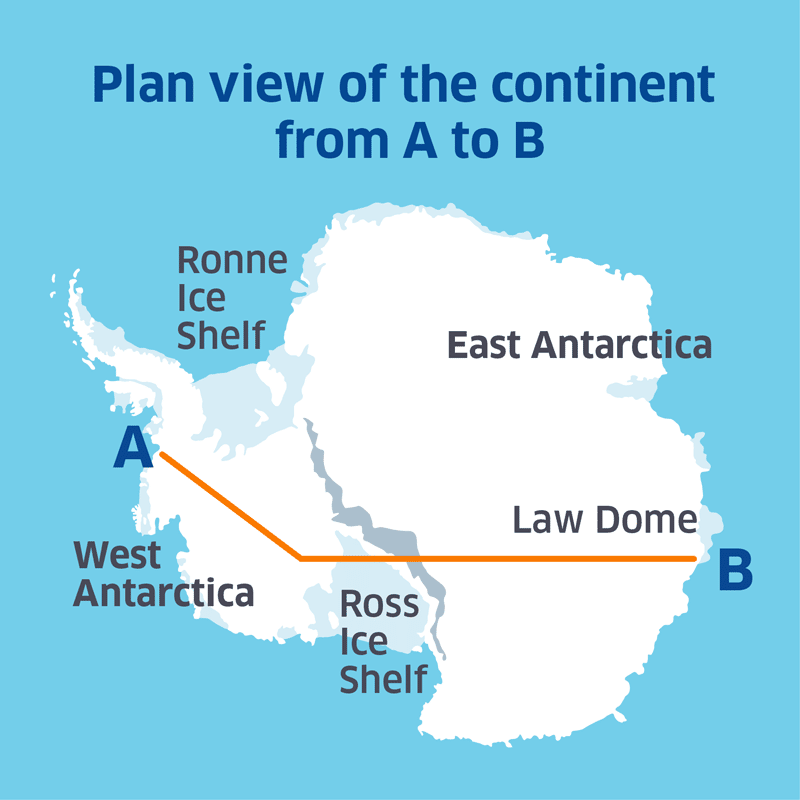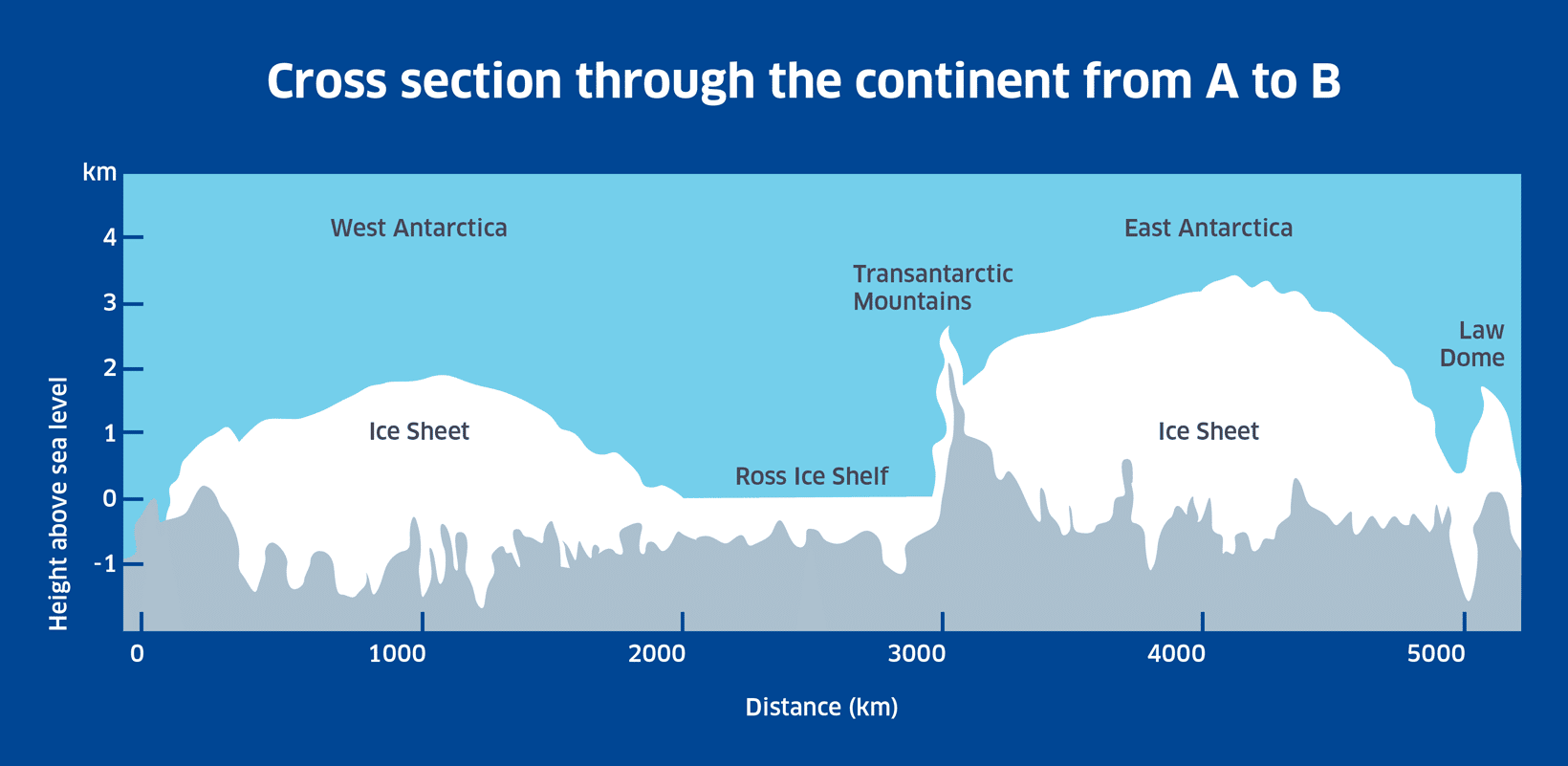
Introduction to Antarctica’s Ice Sheets
Antarctica is made up from three different ice sheets which have built up over millions of years and store 70% of the world’s fresh water.
All about ice sheets
We have learnt in the ‘Sizing Up Antarctica’ page that Antarctica is made of three huge ice sheets, the Antarctic Peninsula, the West Antarctic Ice Sheet, and the East Antarctic Ice Sheet.
These ice sheets are formed when snow on the surface of Antarctica does not melt, and instead stays and gradually builds up over millions of years. Eventually, the weight of the snow squeezes out the air in the layers of snow below until they turn into ice. Gradually, these layers become part of the ice sheets, storing 70% of the world’s fresh water. Because of the sheer weight of the ice pushes down the land beneath by as much as 500 metres!
The amount of ice in Antarctica’s ice sheets is important to us all. By measuring the volume of ice scientists can detect signs of melting from global warming.
You can download a bird’s eye view and a cross-section through the continent to find out more about Antarctica’s ice sheets.
For more information about Antarctica’s ice sheets, follow on to the Ice Sheets and Glaciation page.


Ice Thickness
We can see from the figures above that the thickness of the ice on Antarctica is not consistent through the whole continent.
The East Antarctic Ice Sheet is where we have much thicker ice, and some of the ice here reaches over 3km thickness!
The West Antarctic Ice Sheet is slightly thinner, but with ice still reaching almost 2km in thickness. Can you see in the cross section of the ice, that some of the ice in the West Antarctic Ice Sheet is actually below sea level (almost -2km below sea level in some places!).
The cross section of Antarctica also shows that more ice is accumulated in the centre of the continent, rather than by the coast as these areas are subjected to more melt, and different weather conditions.






